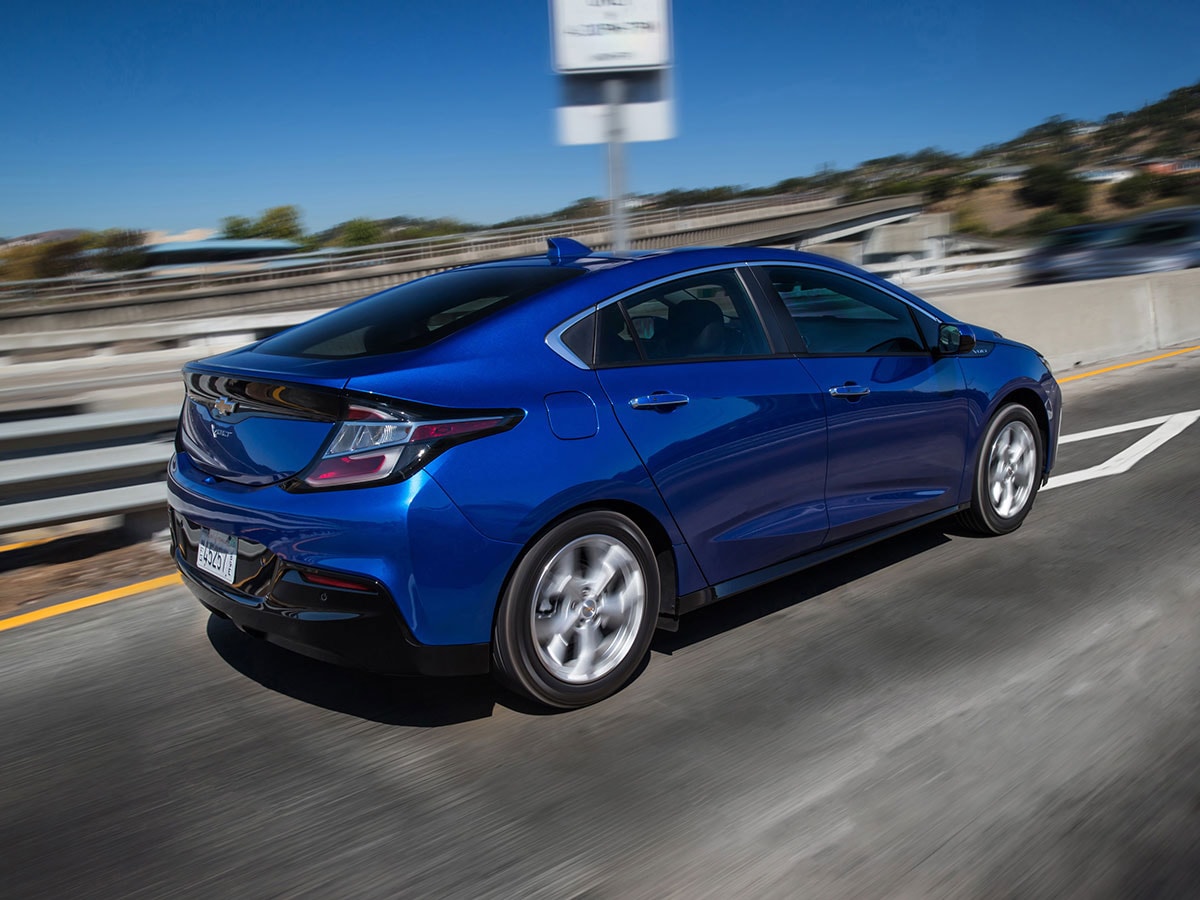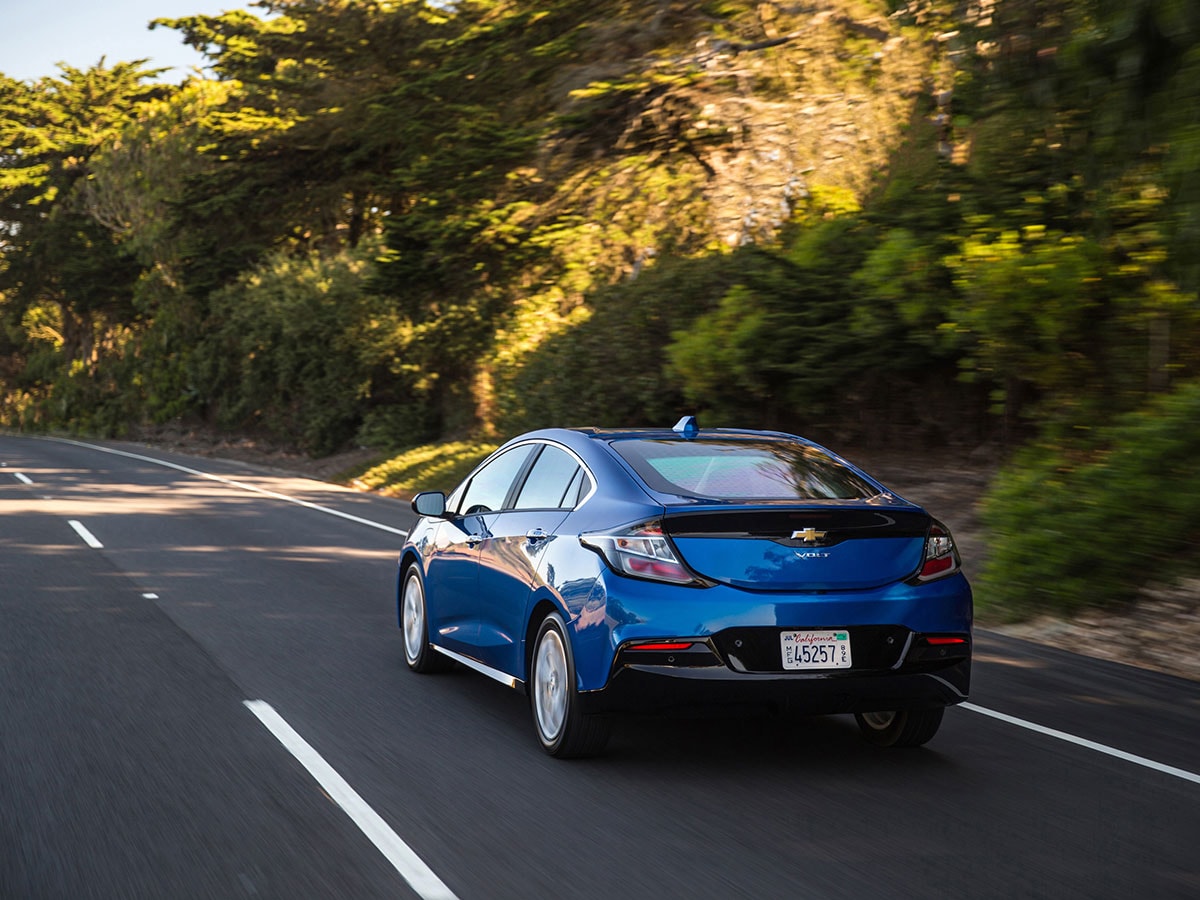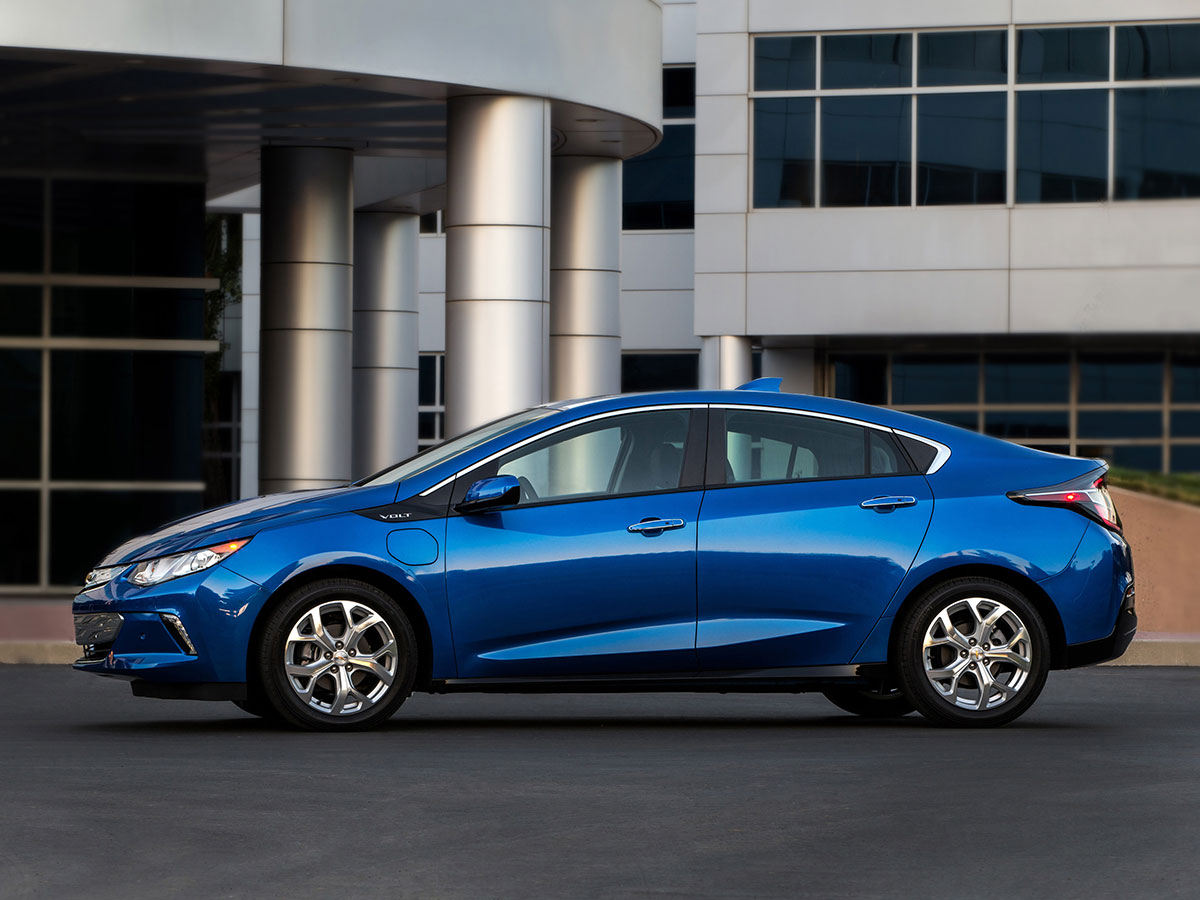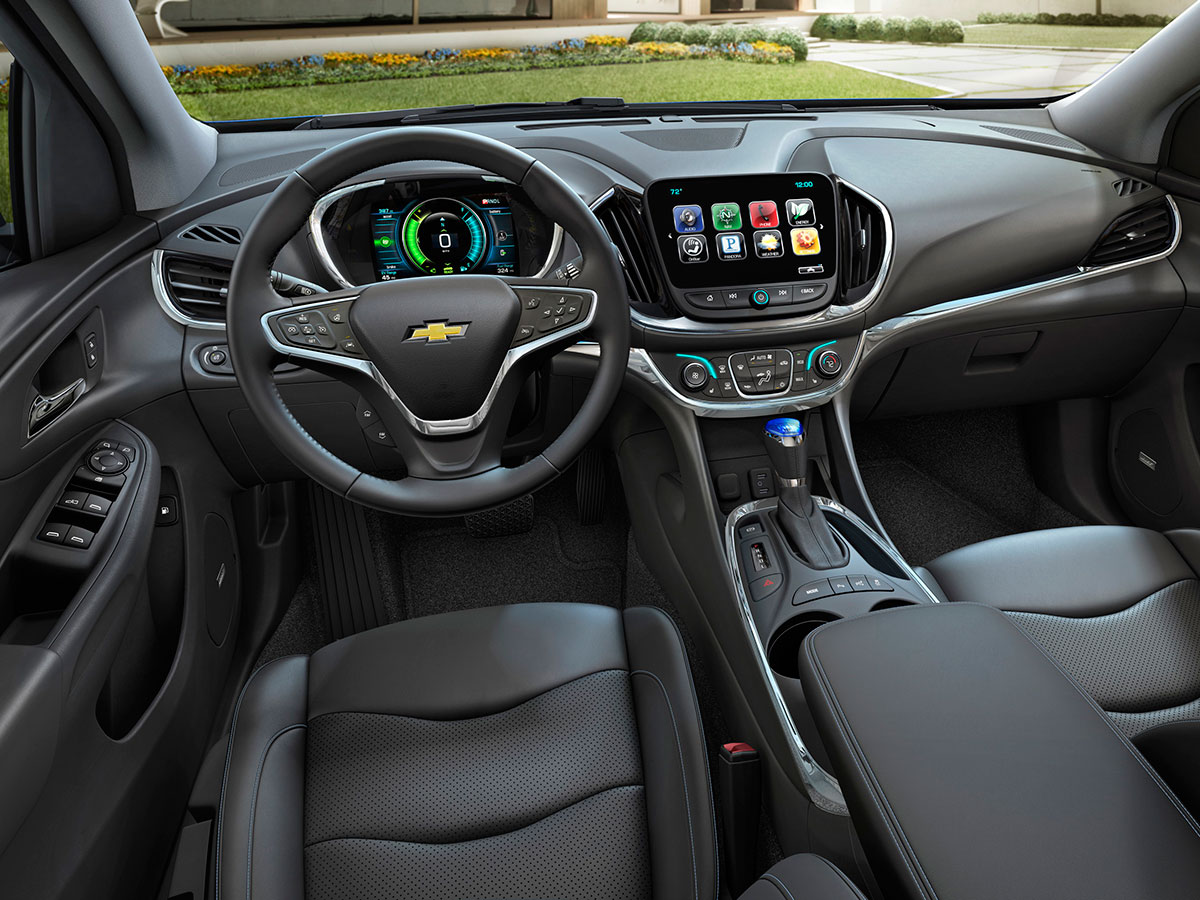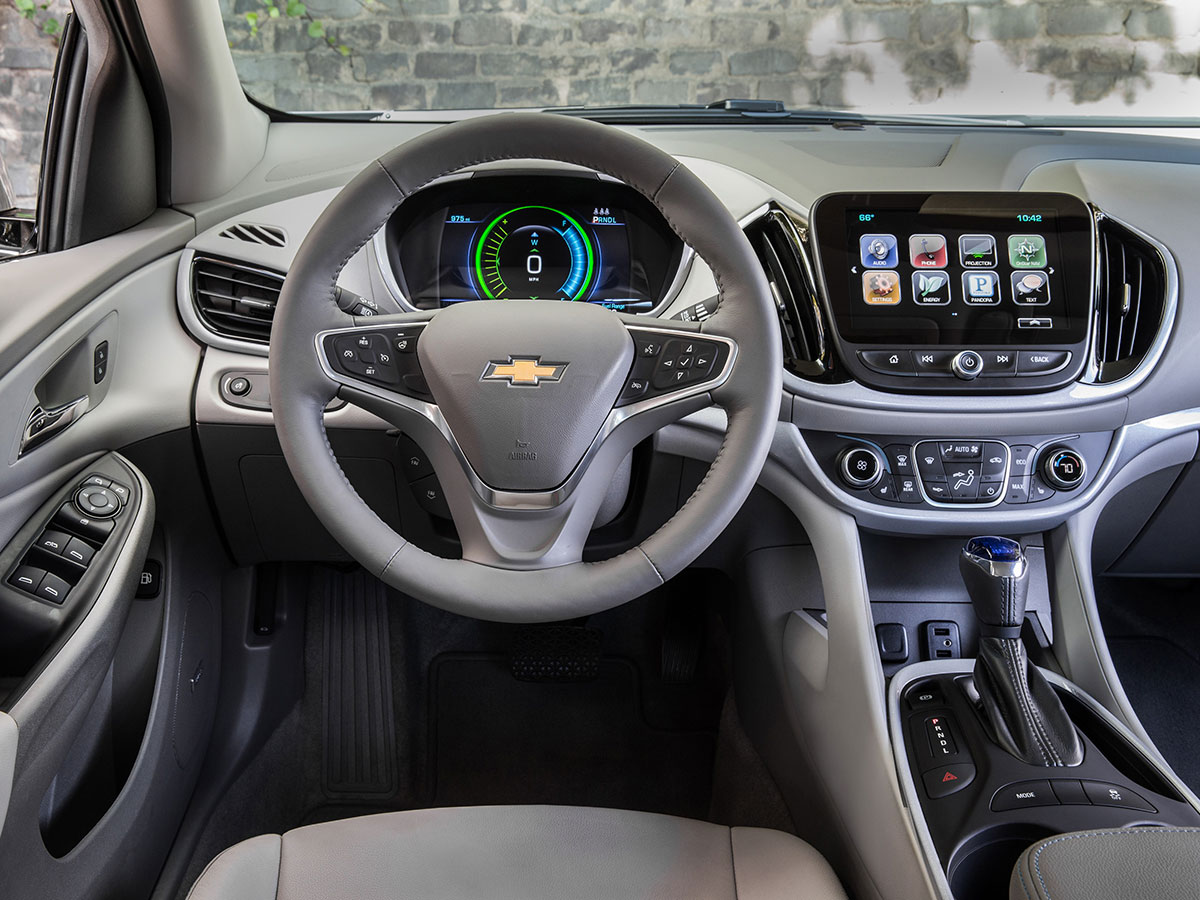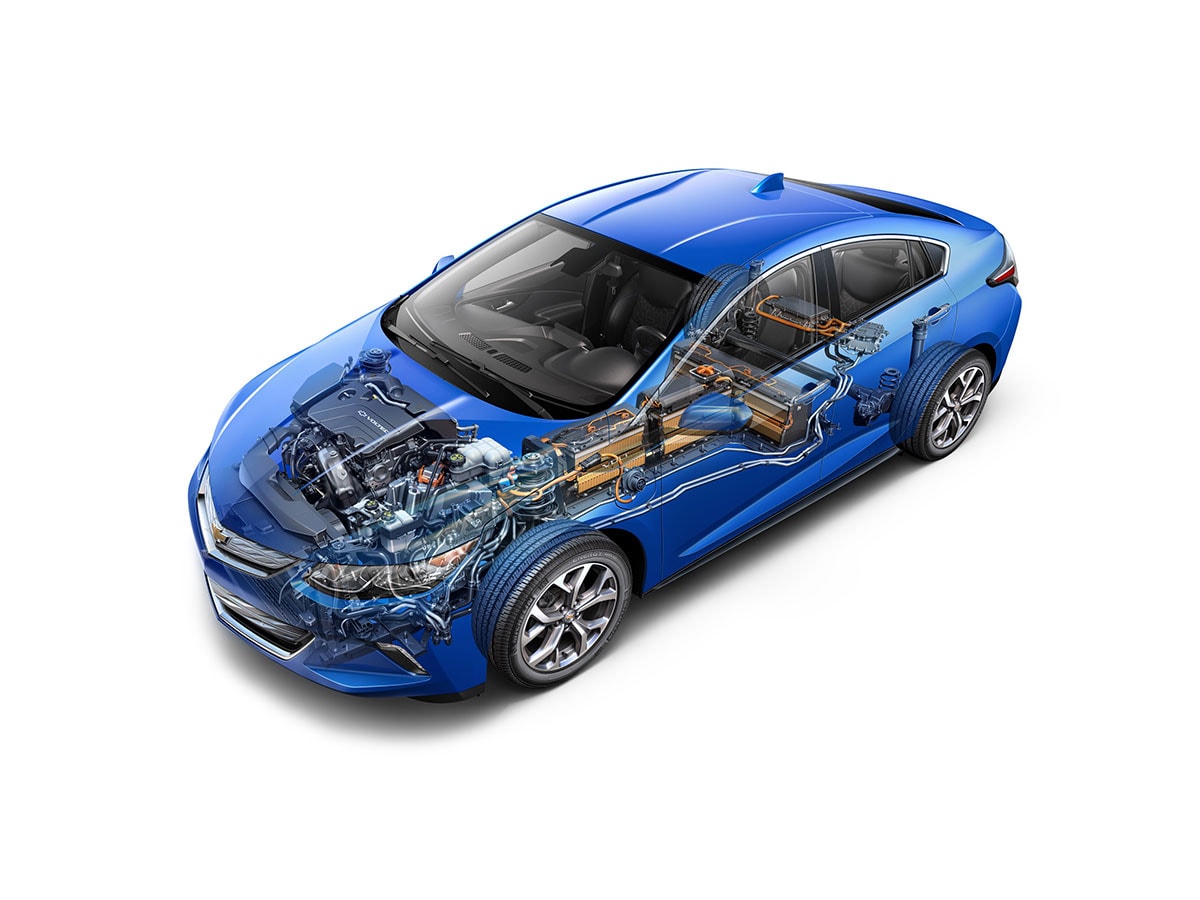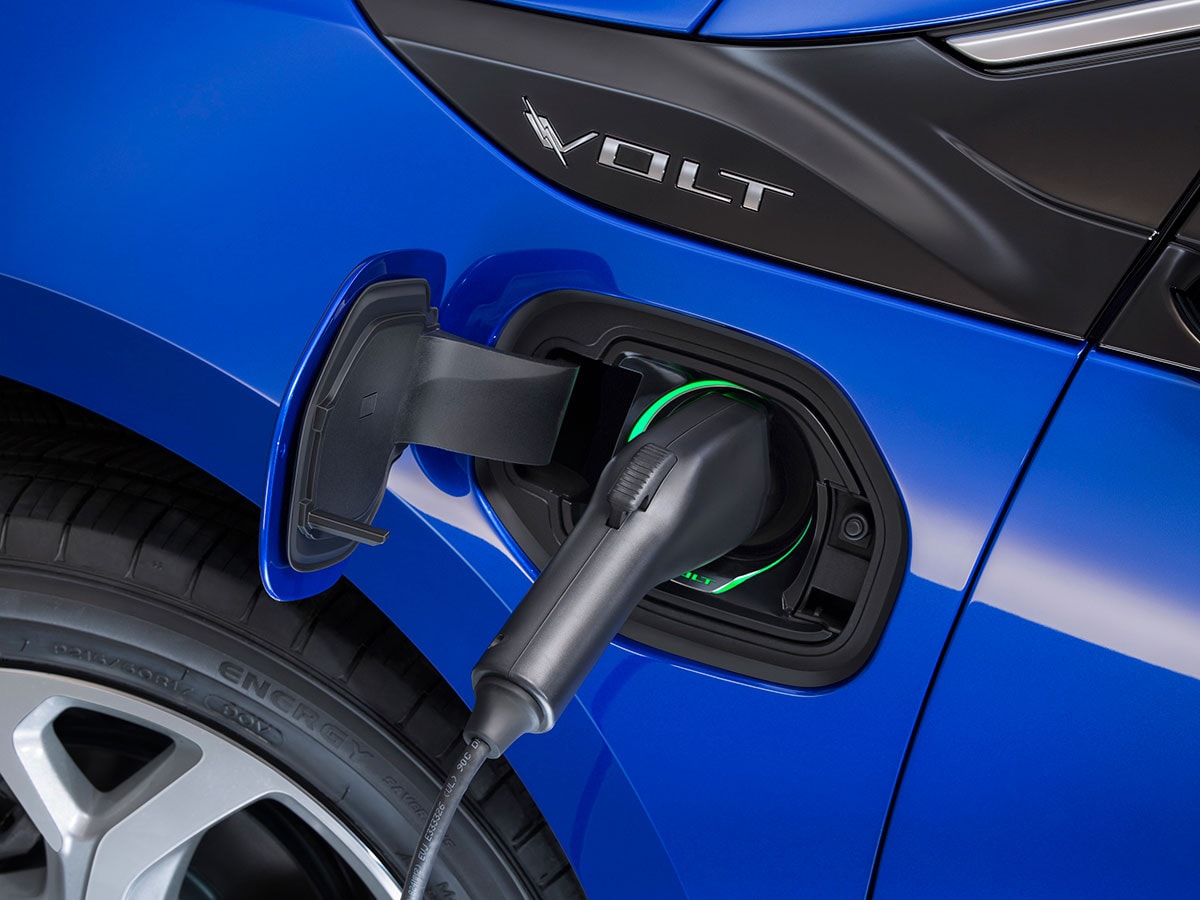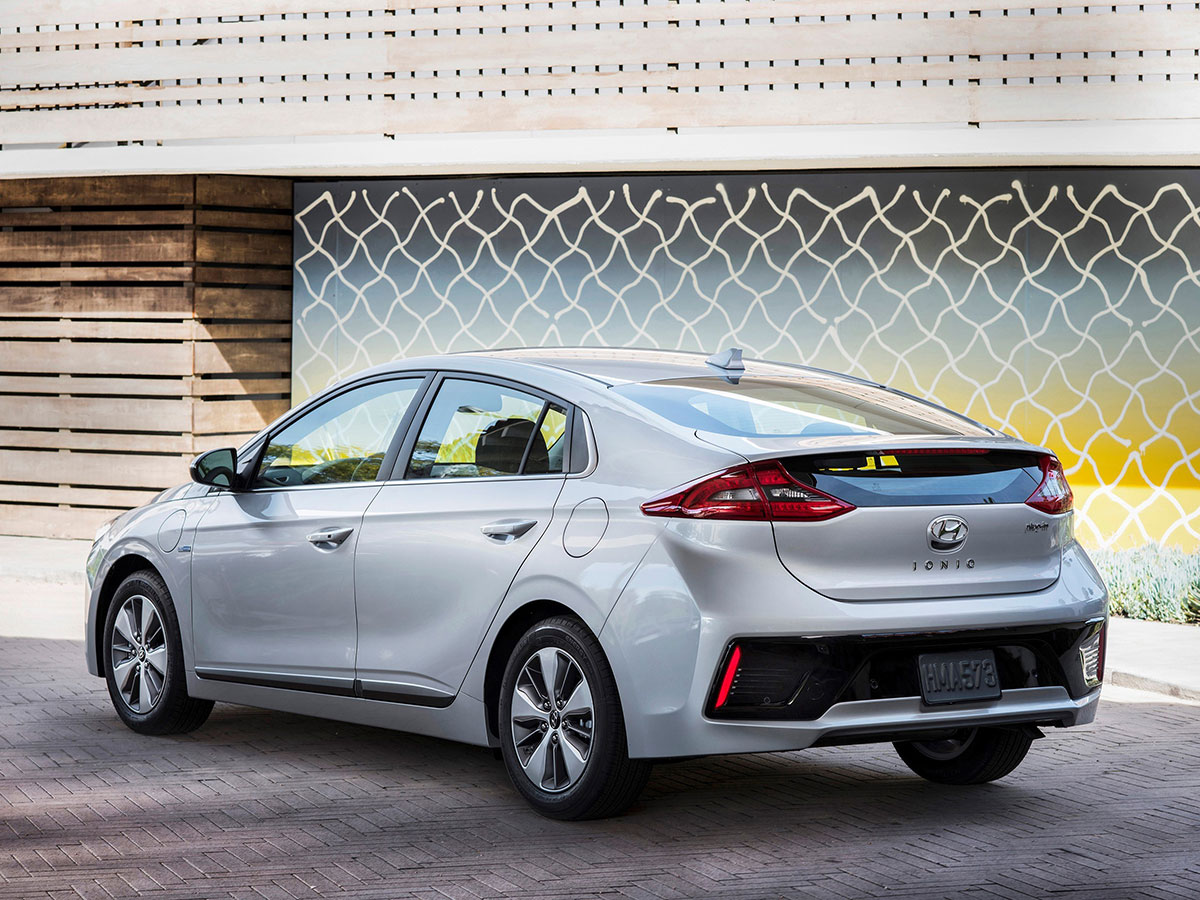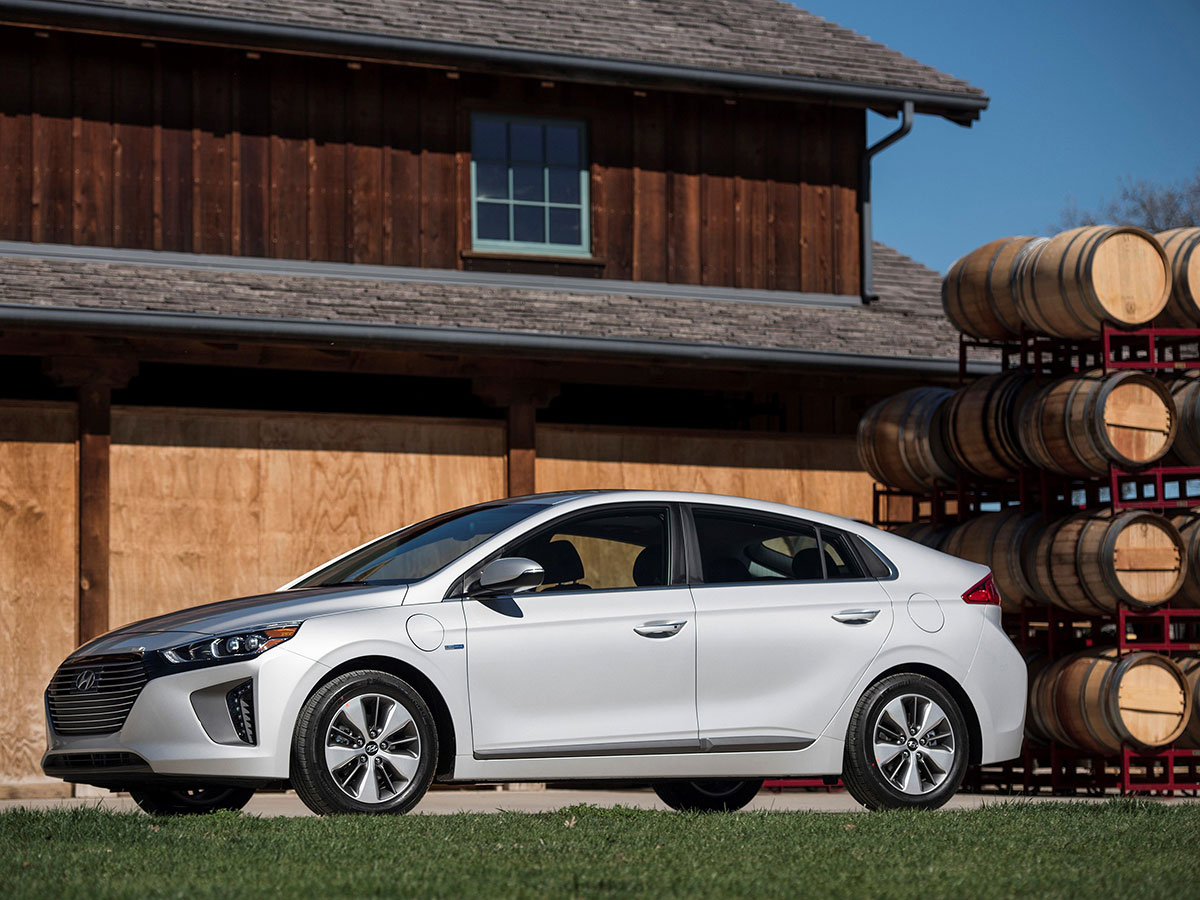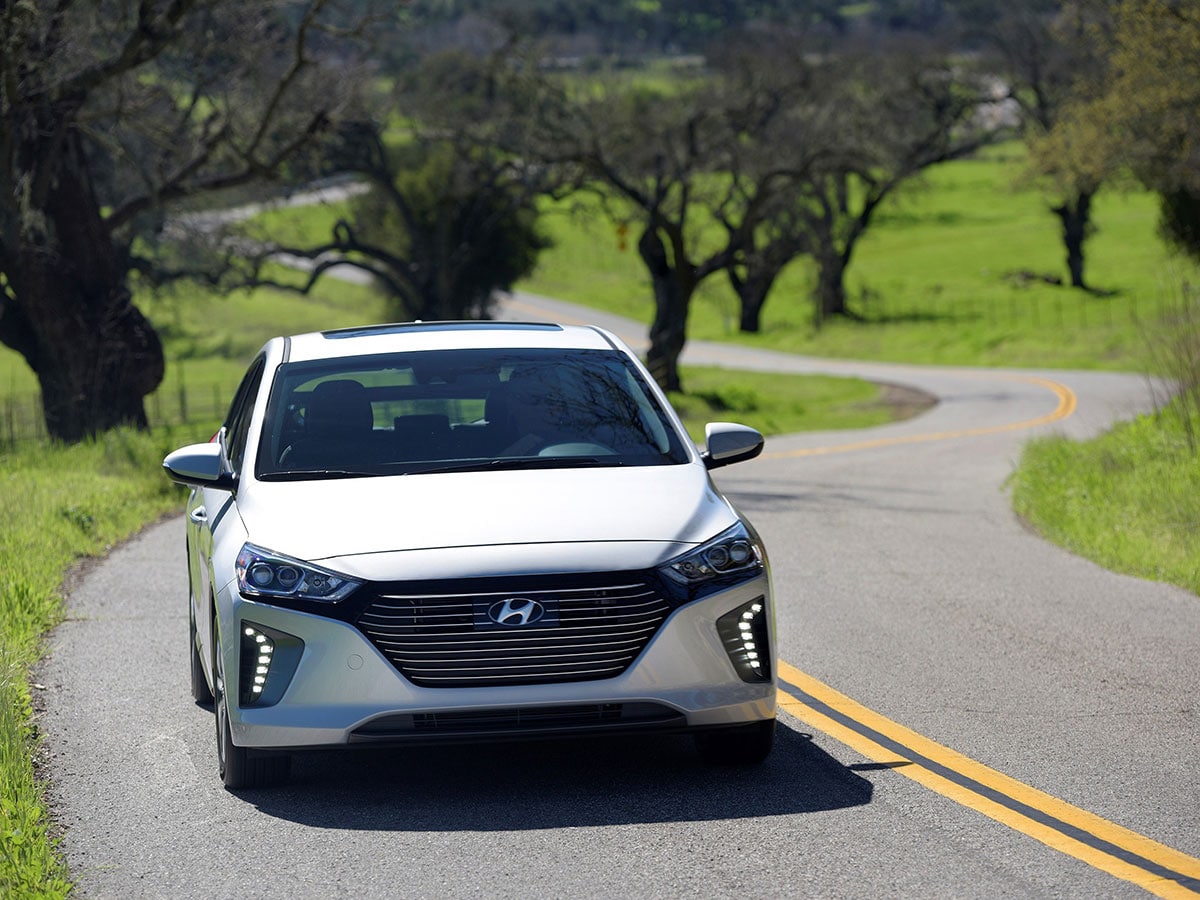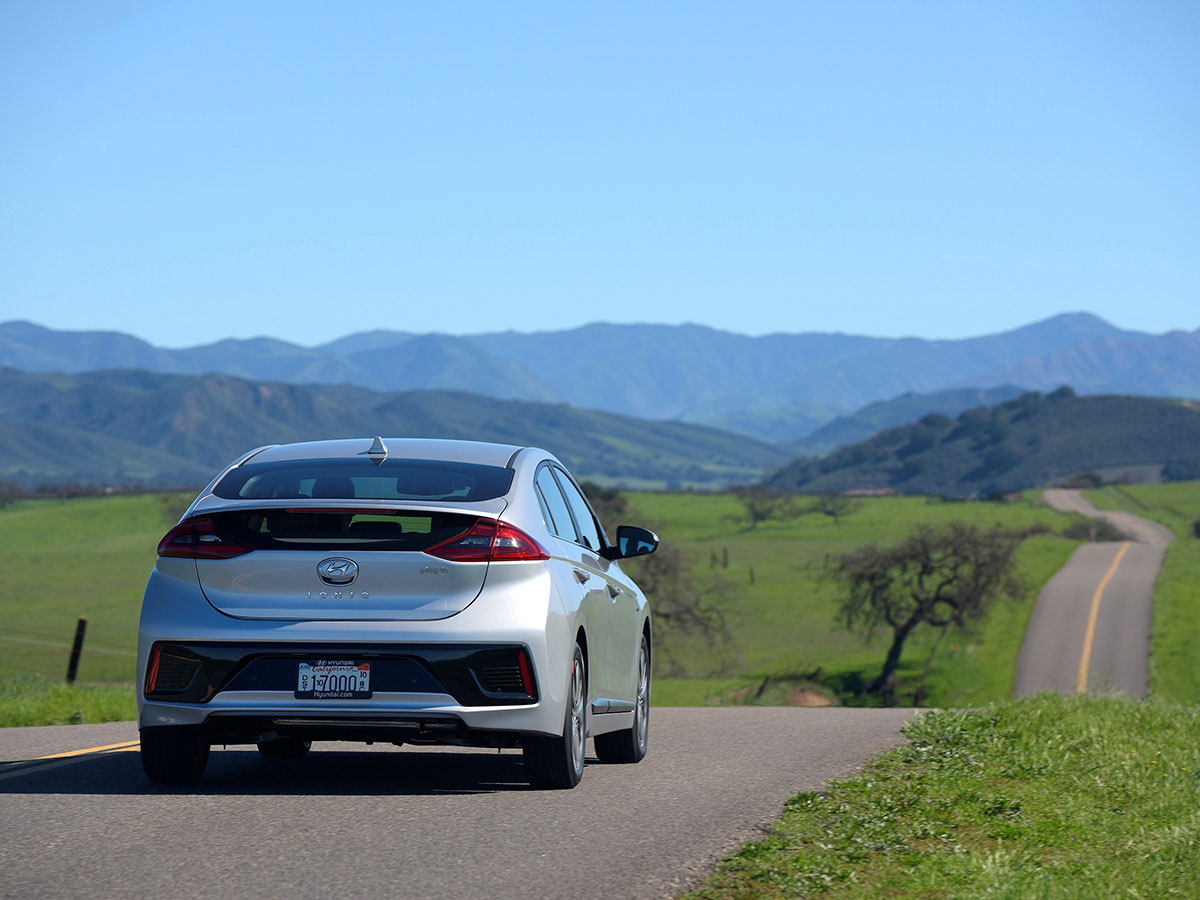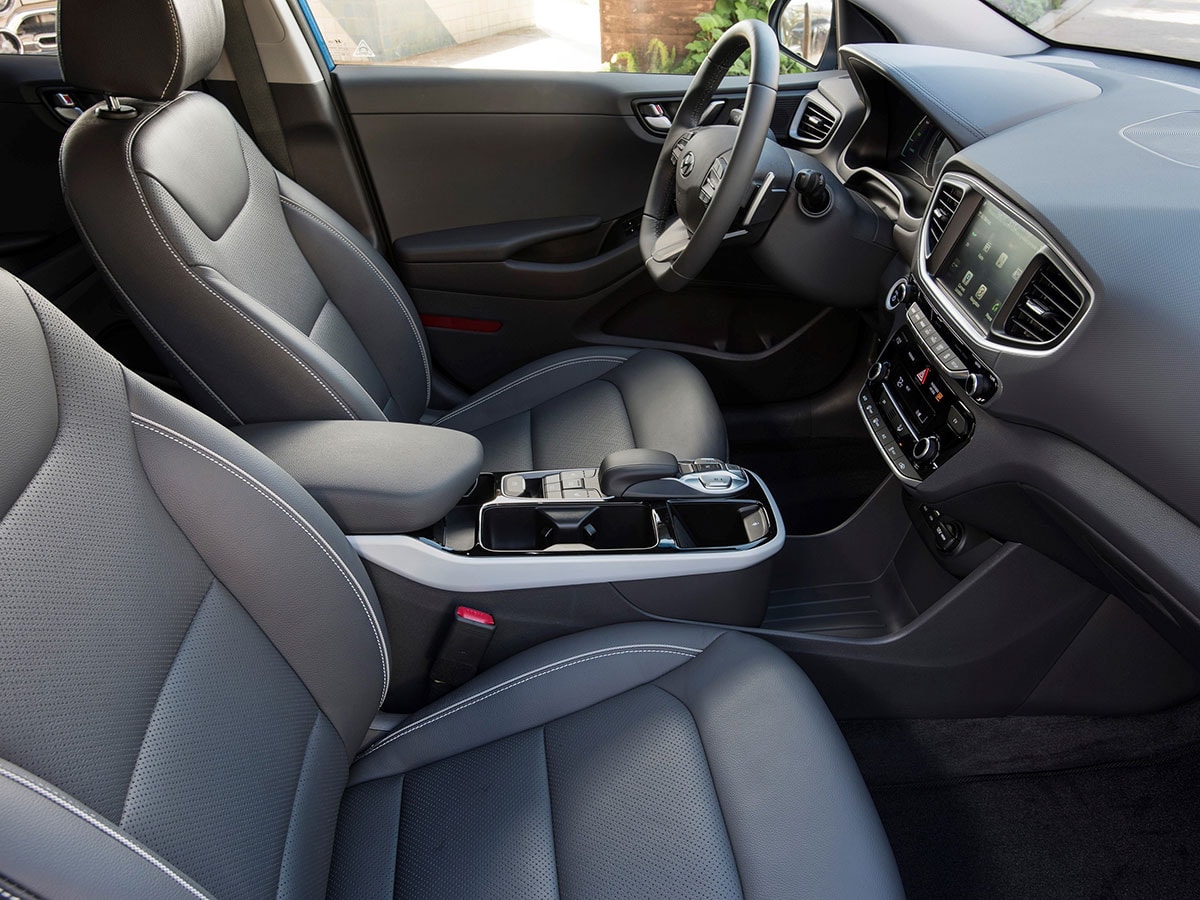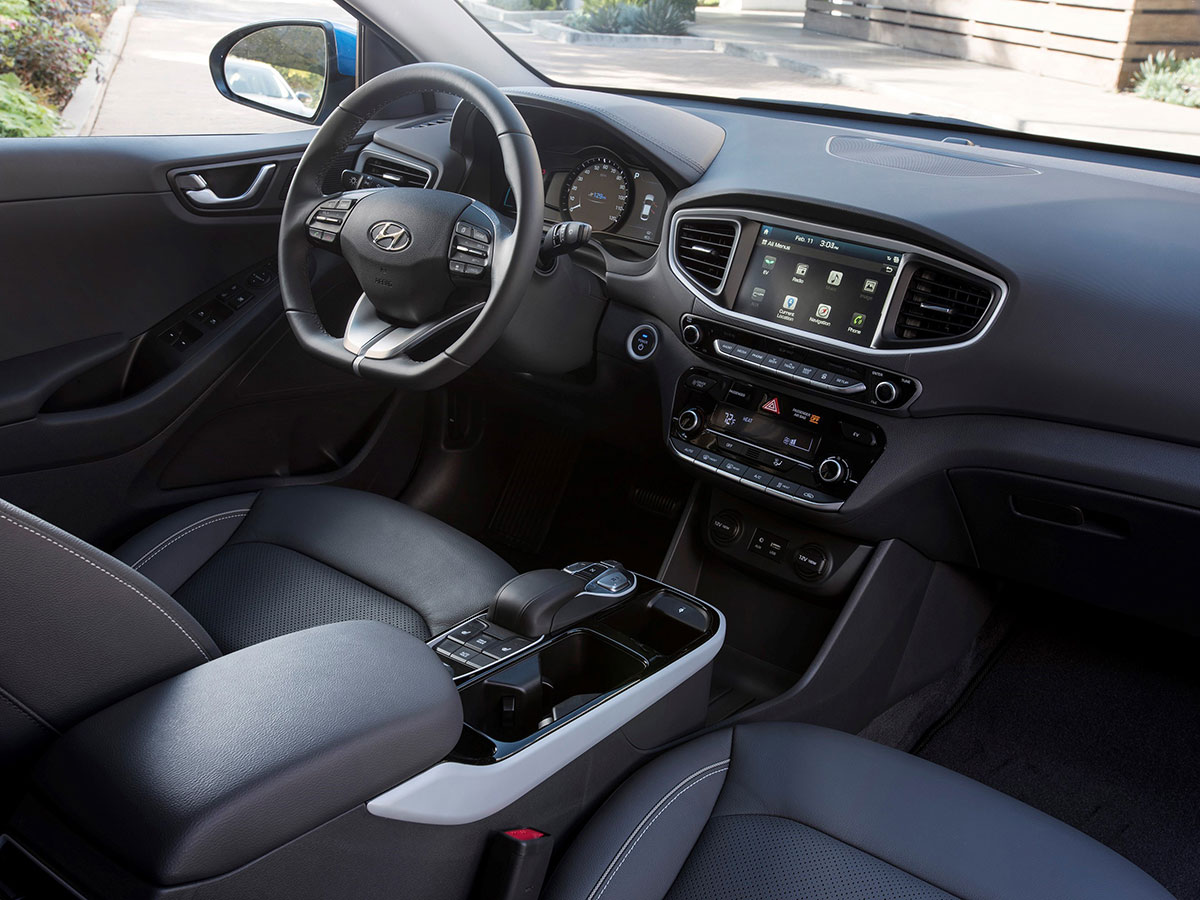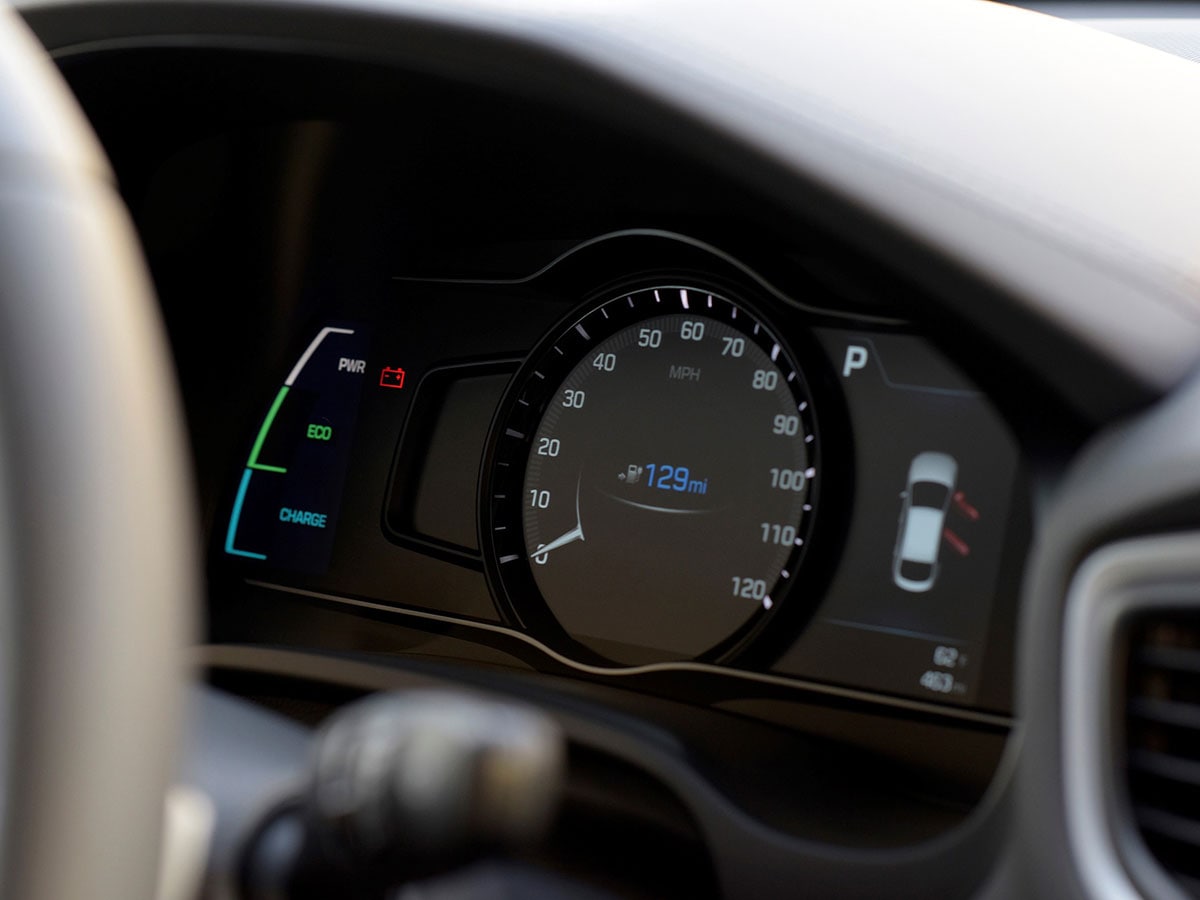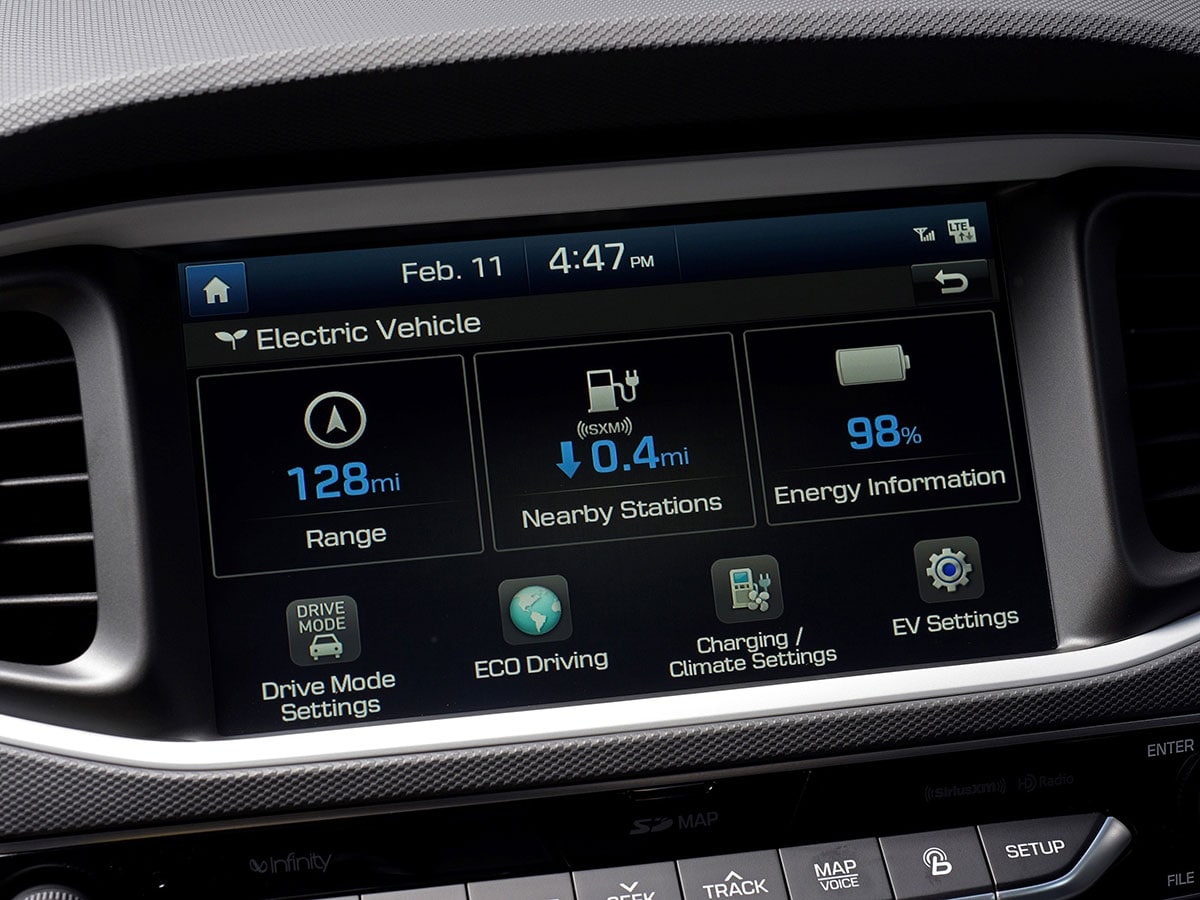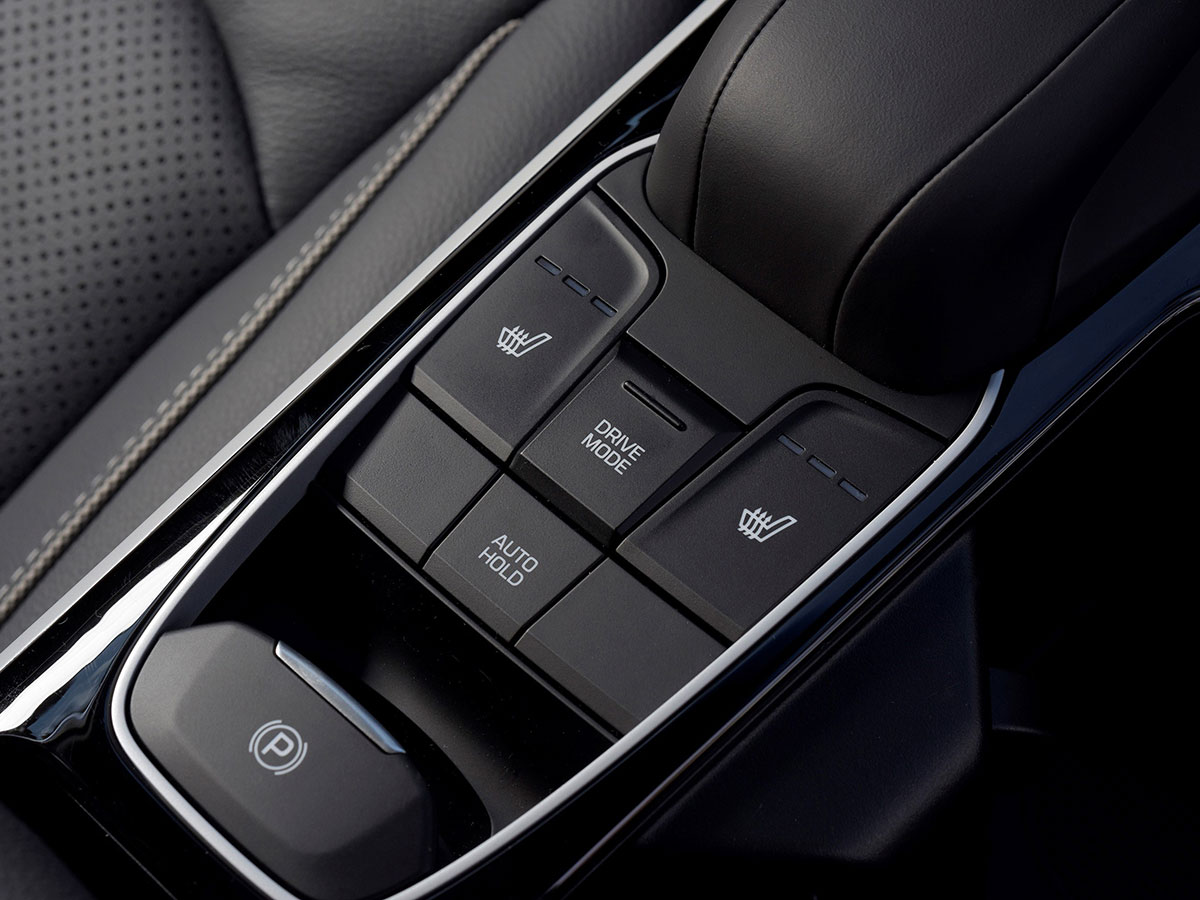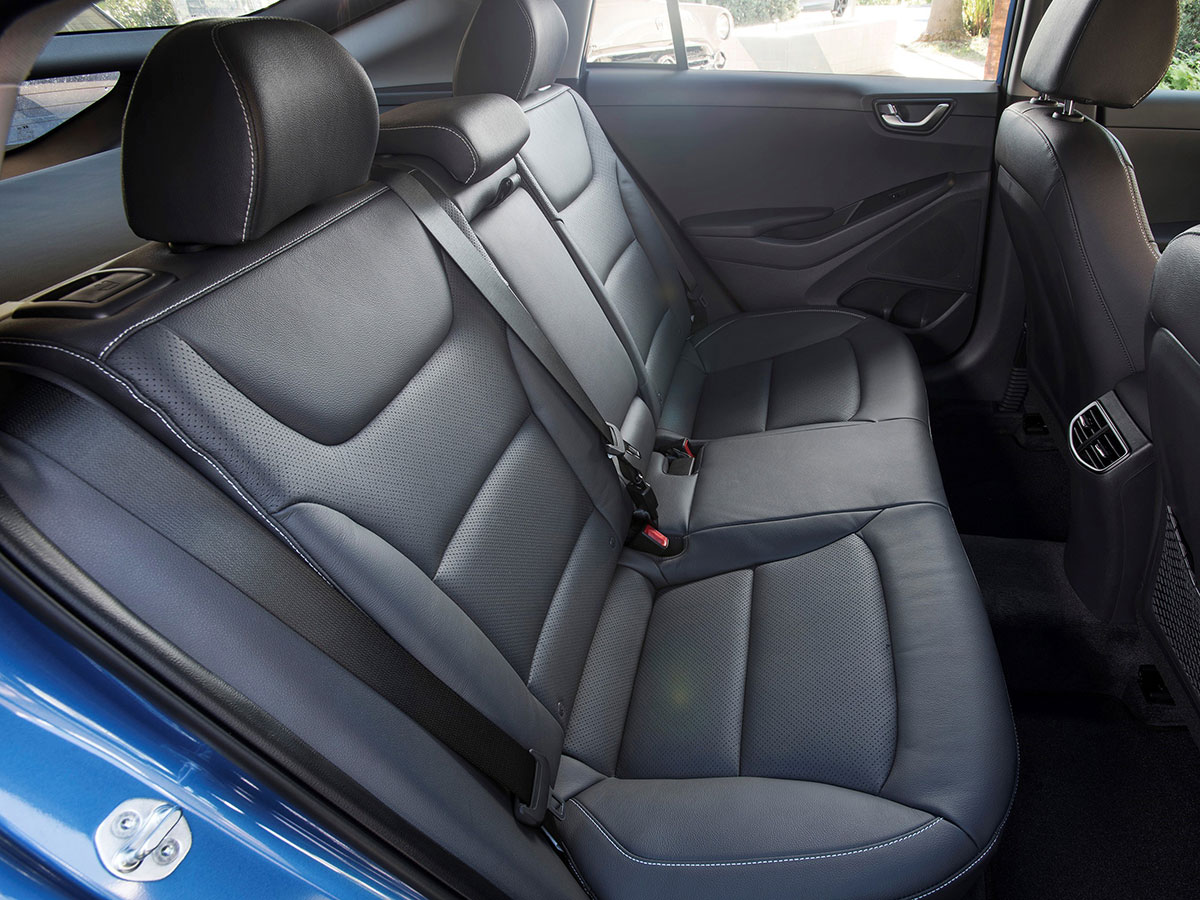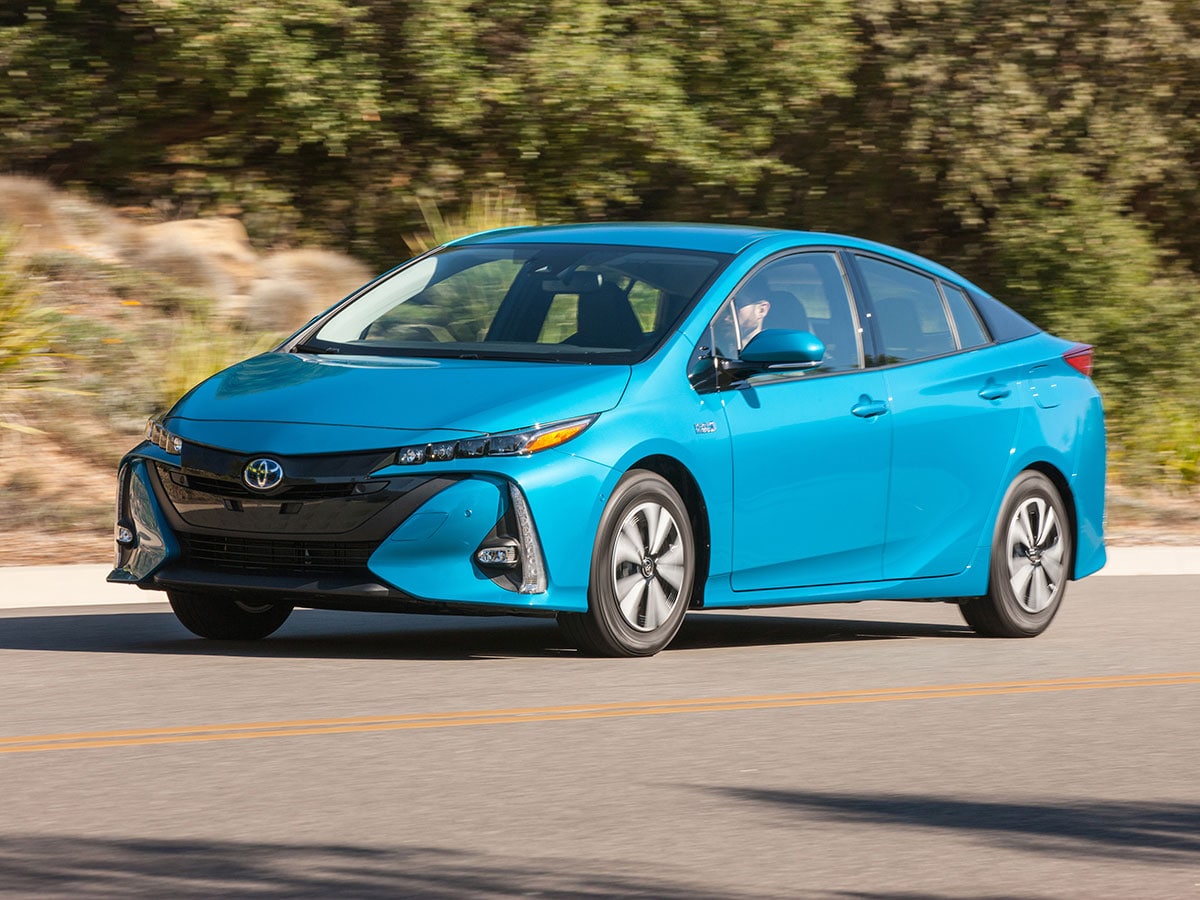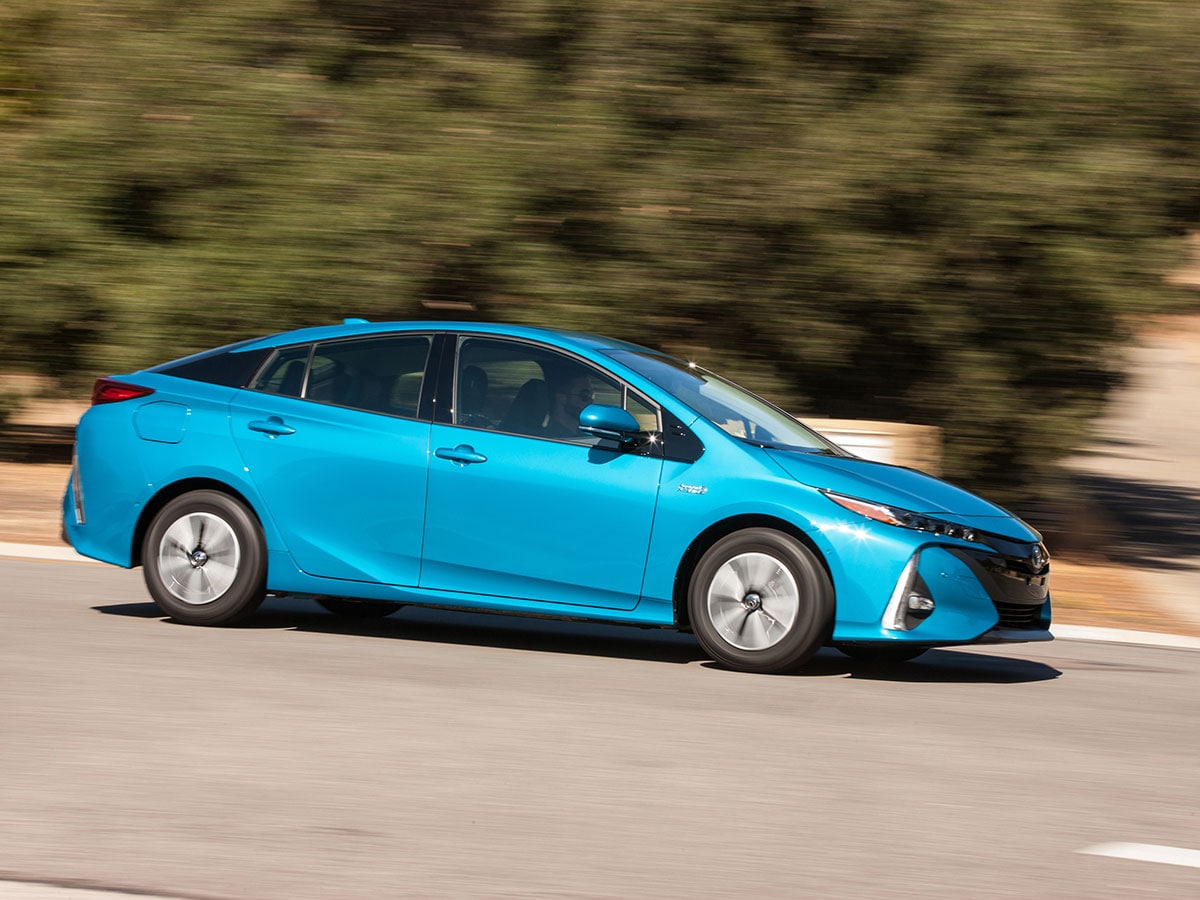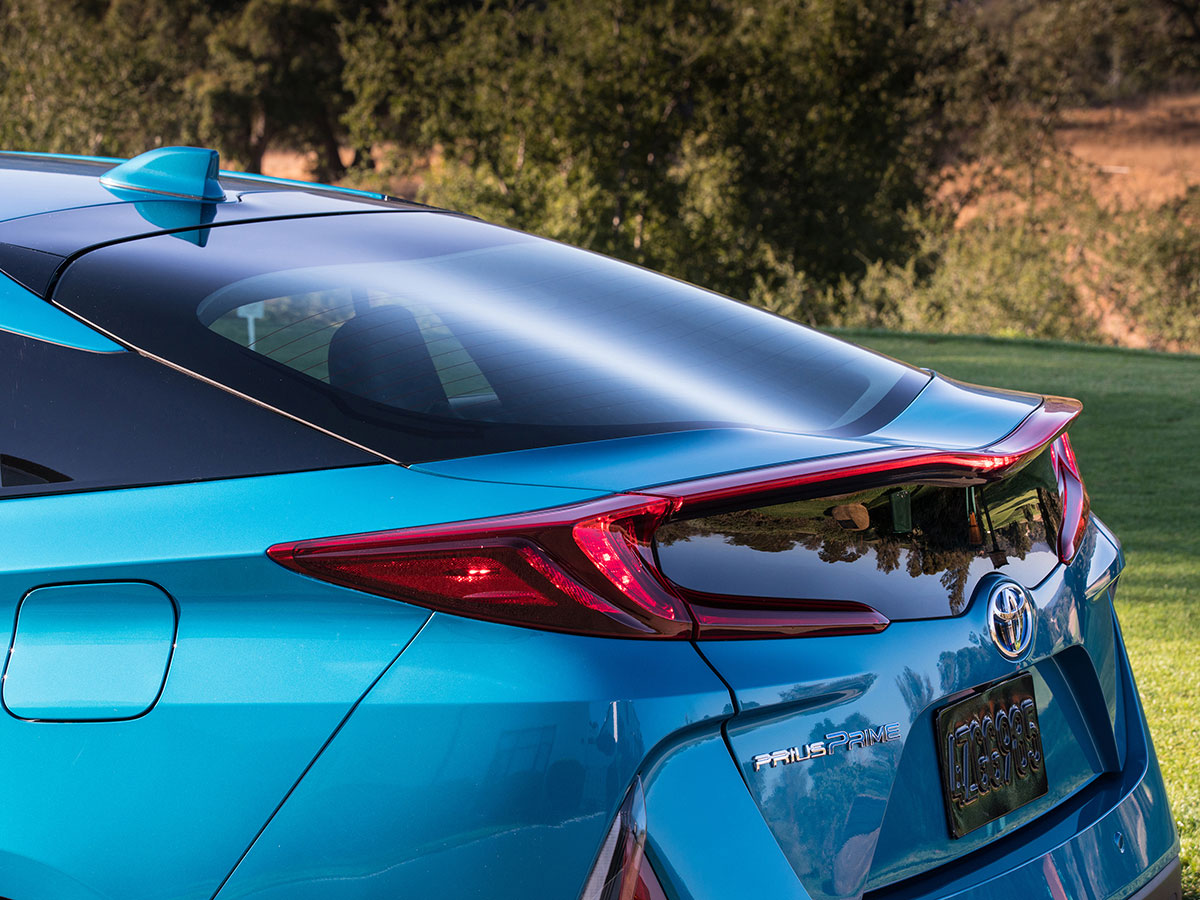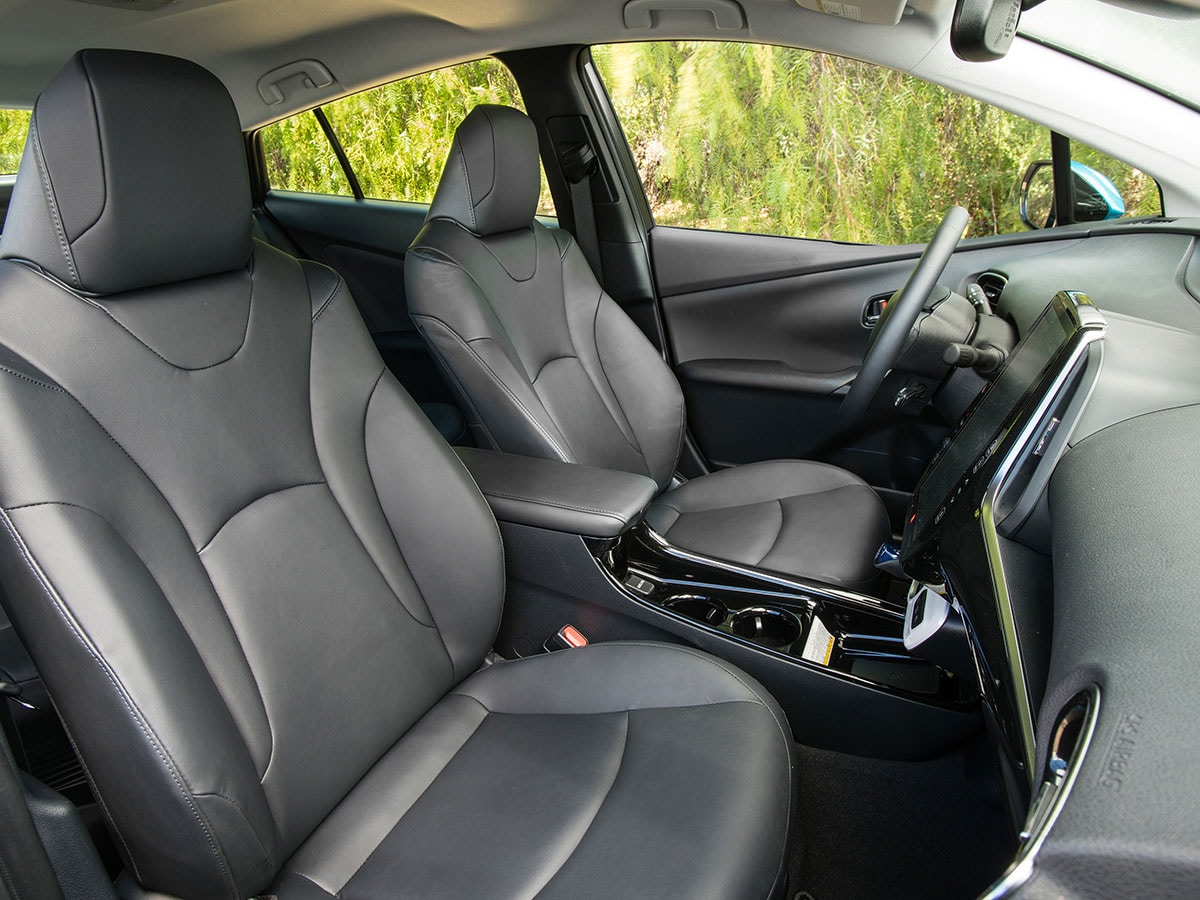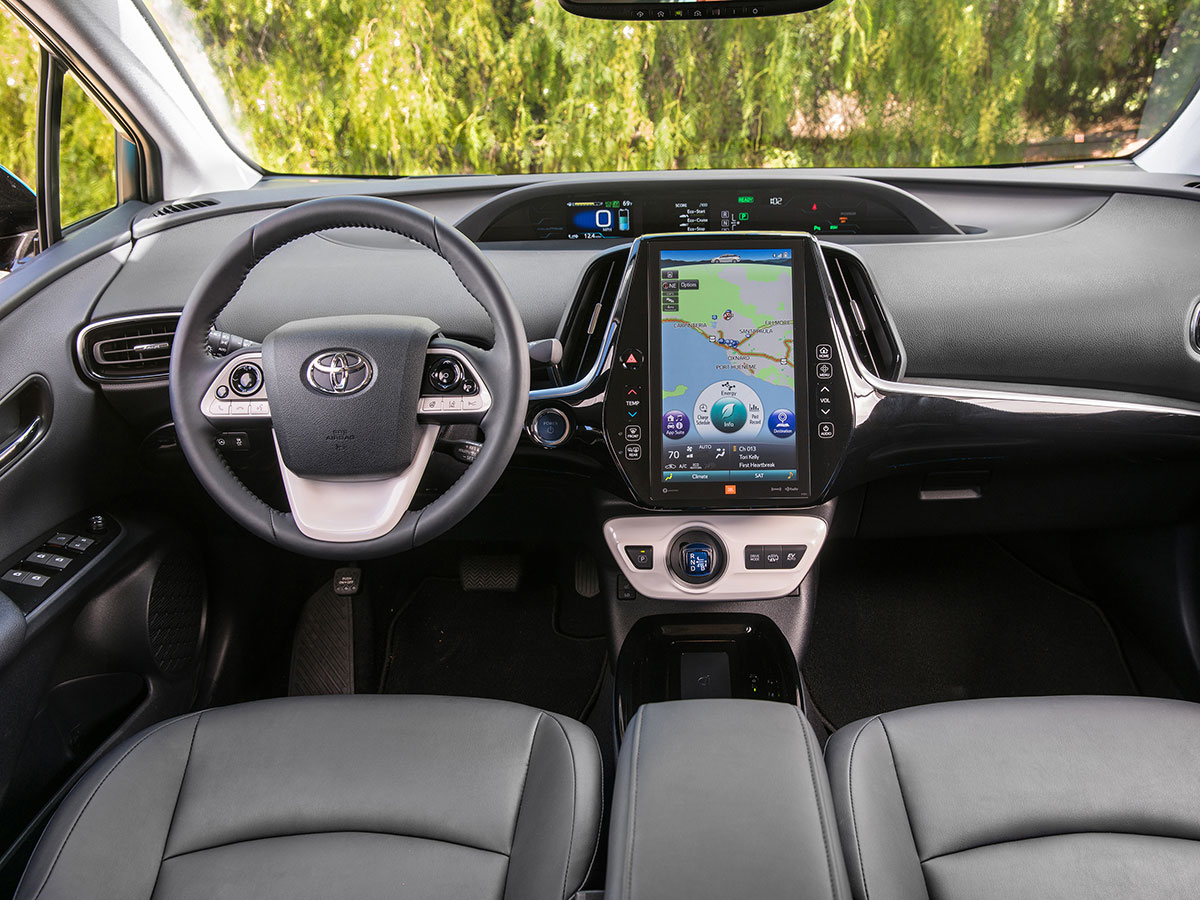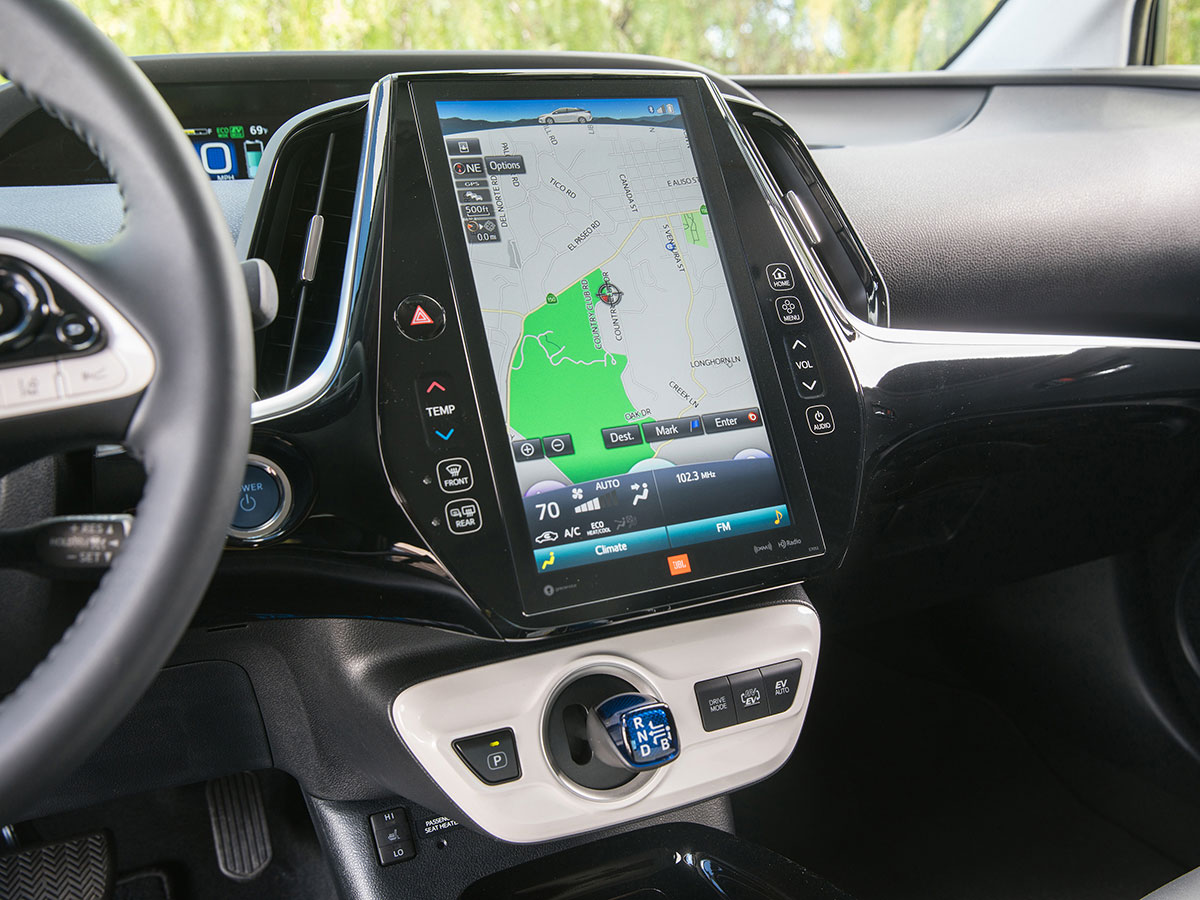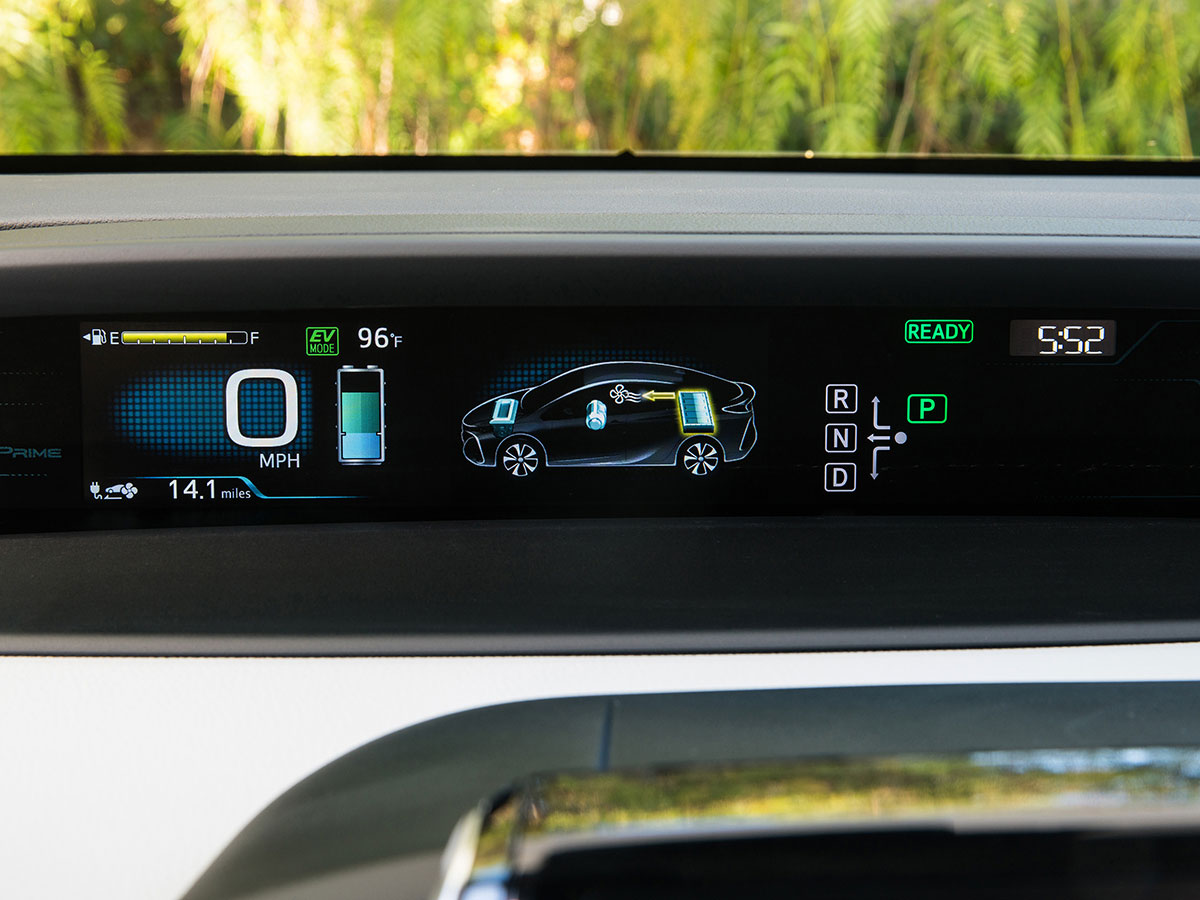Taking a closer look at the smartest working cars in America

In the world of transportation, especially automotive transportation, everybody likes to wax on about the future. But the future isn’t here yet — pure electric cars and hydrogen-powered fuel-cell vehicles are cool, but they still aren’t ready for full-time primetime unless you live in a world with nothing but short commutes with no surprises or you’re always near a place to buy hydrogen. In either case, you’re likely to own a second car.
So let’s get practical and talk about the present, because no matter how romantic the future seems, the present is where we live. And in the present, we want fuel efficiency, smart value, and no range anxiety (the fear that our car’s battery will be drained before we arrive and we’ll be stranded with nothing but a freeway shoulder to cry on). Let’s talk about PHEVs — plug-in hybrid vehicles that can run purely on cheap, efficient electric power or on a gasoline engine, or both. Advantage? You’ll never have to worry about getting stranded. Advantage? If you’re a pure city dweller or a commuter, you may never have to buy gasoline. Advantage? You can own one vehicle that requires no compromises and doesn’t waste fuel.
For 2018, there are more plug-in hybrid models available than ever before — 23 by our last count — coming in every flavor from luxury SUVs to simple, honest commuter cars. PHEVs shine because for most people, they can plug into a regular wall socket, charge up overnight, and get you to your job the next morning on pure electric power with zero tailpipe emissions and — if the unexpected happens and you suddenly need to take a road trip — offering superior fuel economy and good highway manners.
With so many new plug-in hybrids available and making the present so livable, we decided to capture the moment with a real-world comparison test featuring four of the most interesting plug-in hybrids on the market today: the Chevrolet Volt, the new Honda Clarity Plug-In Hybrid and Hyundai Ioniq Plug-in Hybrid, and the Toyota Prius Prime. We gathered these players together, then started the test in the worst Los Angeles rush-hour traffic we could find. After that, we drove our noble group of PHEVs north — straight up the spine of California on a long-distance road trip. Here’s what we learned.
When the Chevrolet Volt debuted for 2011, it was a revelation heralding the modern-day mass-market plug-in hybrid electric vehicle (PHEV). While gasoline-hybrid vehicles like the Toyota Prius had been running around for a decade and a new generation of all-electric vehicles like the Nissan Leaf were about to bloom, the Chevy Volt became the standard-bearer of vehicles that would marry these two technologies.
In the seven years since the Volt arrived in America as the first readily available PHEV, numerous more have arisen. Whether it’s a direct rival like the new Honda Clarity plug-in, an SUV such as the Volvo XC90 T8, or a supercar like the BMW i8, they in some way owe the Volt for introducing the masses to a car powered by both a gasoline engine and an electric motor fed by rechargeable batteries.
The Chevy Volt entered its second generation in 2016 and became the better for it. It gained range in both all-electric driving (53 miles) and total distance, 5-passenger seating vs. the previous four, enhanced technology such as an infotainment system ready for Apple CarPlay and Android Auto, and a sleek new design.
Road warrior
The 2018 Chevy Volt is the elder statesmen among plug-in hybrid electric cars, but it easily hung with the younger bucks in our recent 800-mile road trip from Southern to Central California and back.
Power is perfectly acceptable for this class, and we’ll go as far as saying the Volt even packs a punch when electrons are doing the work. In all-electric mode, the Volt has the satisfying acceleration associated with an electric vehicle (EV). Mash the throttle and Chevy’s plug-in electric vehicle scoots.
Unlike other PHEVs, as long as the Volt’s batteries have juice, the car will remain in EV mode unless instructed otherwise (i.e., putting it in Mountain mode reserves battery capacity on uphill climbs, while Hold mode uses the gasoline engine and saves battery power for settings such as the city where it’s more efficient). In Normal mode we ran the Volt up to 80 mph and beyond, and the vehicle continued to run exclusively on battery power.
Of course, the beauty of a plug-in electric vehicle like the Chevy Volt is that when the batteries deplete, the gas engine kicks on. With about 800 miles to cover and only two overnight recharges, the majority of our miles were driven with the Volt’s 1.5-liter 4-cylinder engine purring. As such, the Volt’s noise levels rose. And as with every other PHEV in this comparison except the Hyundai Ioniq, the Volt uses a continuously variable transmission (CVT) that drones. This was most apparent on long, steep hills. Driving up the Interstate 5 freeway over the Grapevine, the CVT droned heavily as the car gained thousands of feet in elevation.
On the driver-assist side, we appreciate that the Volt offers blind-spot monitoring, forward-collision alert, lane-keep assist, and automatic emergency braking, but we wish adaptive cruise control were available.
Fit, finish and comfort
Our testers were mostly impressed with the Volt’s handsome cabin. Controls for audio and climate are easy to see and use, and Apple CarPlay integration was smooth for most of us (one of our editors cited stubborn connectivity and a couple of software system crashes).
One missed opportunity we collectively noted was the driver’s seat. It is manual adjust even on the leather-lined Premier model, and not all that well bolstered. Additional lumbar support would have helped the miles fly by a little faster.
If you must slog through congestion, the Volt has a couple of tricks up its sleeve. One is a paddle on the left side of the steering wheel meant for “regen on demand.” Think of it as a brake. Pulling it slows the vehicle, though not to a dead stop (only down to 1 mph). The other is the L mode. Shifting the gear selector to this position enables “1-pedal” driving in that when you take your foot off the accelerator, the vehicle slows in a more aggressive way. Timed right in traffic, you can save stress on your foot and brain by not having to use the brake pedal as often. Both of these features use the energy created in slowing to help recharge the car’s battery.
It takes about as long to adjust to driving the Clarity as it takes to get used to a Honda Accord. While its styling is admittedly quirky, the Clarity is much like any other sedan in most ways, but with the added bonus of 48 miles of electric-only driving.
The nicely appointed interior uses attractive, quality materials, and the controls are well laid out and within easy reach. The Clarity has a comfortable ride, which adds to the car’s pleasant demeanor on the highway. The seats lack lumbar support and came second to the Prius Prime in terms of overall comfort, but still proved comfortable enough on long drives.
Driving ease and efficiency
Power comes from a 1.5-liter Atkinson-cycle 4-cylinder engine, an electric motor, and a 17-kWh battery pack. While the Clarity has the most power of this quartet — 212 total system horsepower — it is also the heaviest. Acceleration is still adequate, but the magic of this car is not the amount of power it has, but the numerous ways you can harness it.
As long as there’s still electric range, you can easily drive at freeway speeds without the engine kicking in. When you step on the throttle, it will initially keep the bias toward the electric motor. But for sportier maneuvers, push harder — past the pedal’s “clickpoint” — and the engine kicks in. Put it in EV mode and the Clarity acts like an electric car. In HV mode, it can act like a hybrid, or you can use mostly engine and save the battery charge for later. There are also steering wheel-mounted paddles that you can use to control the strength of the regenerative braking. Of all the cars we drove, the Clarity’s brakes felt the most natural. The Prius Prime’s are too grabby, and the Volt’s were mushy. The 2nd-best-feeling brakes were the Ioniq’s.
Is the Clarity for you? We wouldn’t doubt it.
One thing that stood out about the four plug-in hybrids we drove was that each had a different take on what should be the highest priority in a PHEV. For example, the Toyota Prius Prime has about half the all-electric range of the Clarity, but nearly double the combined gasoline/electric range. So if you anticipate long road trips, the Prius Prime or Ioniq PHEV might be the better choice for you. The Ioniq has similar electric and gas ranges as the Prius Prime, with the lowest starting price of the group. And the Volt, which essentially started it all, still has the best electric range of the four, but its 53 miles just barely edges out the Clarity.
Much like a BOGO sale, the Clarity is essentially buy one, get one free. You get the comfort, space and amenities of a midsize sedan that starts at about $34,000, but Honda throws in electric-vehicle technology without range anxiety. You can easily skip the gas station forever if you like, the car is eligible for a $7,500 federal income tax credit, and there may be more state and local incentives as well. The Clarity comes loaded with value, with next to no compromise, and is easy to live with as the only car you own.
The 2018 Hyundai Ioniq Plug-In Hybrid stands tall as the most everyday car in this test. Far from a slight or a compliment served cold, we mean that as an enthusiastic endorsement. From a practical plug-in-hybrid point of view, the gasoline/electric PHEV version of the Ioniq got fan notes from every driver in our test.
We universally agreed that for a 5-passenger hybrid hatchback that starts at just $25,835, the Ioniq had an inside line when it came to value. Standard features at that price include body-color exterior trim pieces — including heated outside mirrors — and a gift basket of interior features like heated front seats, a rearview camera, and dual-zone climate control. For the media junkies, a 7-inch touch-screen display and Apple CarPlay/Android Auto are also included. Throw in a $4,500 federal tax credit and a 10-year/100,000-mile warranty on the hybrid powertrain, and you’ve already got a pretty good lock on value.
Real live value
When you move up to the driving benefits, the Ioniq’s long value plays even longer. Hyundai says that the Ioniq will deliver 52 mpg and up to 630 miles of total range if you’ve got a full tank of gas (11.4 gallons) and a full battery charge. While we didn’t match those other-worldly numbers on our comparison test, we did get close enough to brag.
For power, the Ioniq Plug-In Hybrid uses a 1.6-liter 4-cylinder rated at 104 horsepower combined with a 60-horsepower motor. The system’s net total of 139 horsepower is very usable around town, but be advised that while Sport mode adds spirit to the Ioniq at 50 mph and below, it’s not much help for strong passing at highway speeds. Worth noting: A 6-speed automatic transmission sends the Ioniq’s power neatly to its front wheels, whereas most other hybrids employ continuously variable transmissions which have a reputation for good fuel economy but mediocre acceleration.
Is it a hassle to take advantage of the plug-in power? Nope. The Hyundai Ioniq Plug-In Hybrid will fully charge overnight on a normal 120-volt wall plug and — if you stay within speed limits — give you at least the 29 miles of all electric range that you’ve been promised by the EPA. And when you use that electricity up, you can stay fearless knowing that the gasoline engine will deliver you anywhere you want to go with no waiting.
The rest of the driving experience — ride, handling, steering, braking — is decent for the class. Most notable among these qualities, the braking feel is quite normal and predictable — not something you can always count on when your vehicle has regenerative brakes both stopping the car and collecting energy to recharge the battery pack.
An easy place to spend your time
From the inside, the Ioniq continues the simple, clean, attractive demeanor that distinguishes the exterior. It’s not especially quiet, but no car in this test was. Over the long drive, we could have also used the extra comfort offered by the option of power-adjustability and lumbar for the driver’s seat. The 60/40-split rear seats fold flat, and the cargo floor does a good job of hiding the battery beneath it.
And while the Honda Clarity’s interior impressed us most, the Hyundai Ioniq’s pure practicality stood out. The electric/hybrid information available from the touch-screen, for example, includes not just a graphic display of the energy flow from the motor/engine and to the battery, it also keeps track of the overall range, the electric range, and the gasoline range, as well as the expected charge times for both 240- and 120-volt systems, and the charge amount left in the battery.
Clearly, the 2018 Hyundai Ioniq Plug-In Hybrid appeals to the buyer looking for exceptional practicality, and it does so seductively. In fact, after this test, one of our editors added the Ioniq plug-in hybrid to his shopping list. In the real world, higher praise is hard to find.
Toyota’s second crack at a plug-in hybrid in its pioneering Prius lineup brings enough differentiation in both styling and performance to warrant a serious look at this vehicle for those who want the best of both the pure electric and hybrid worlds.
While the 2018 Toyota Prius Prime doesn’t have the same all-electric range as its archrival Chevrolet Volt, it does offer 25 miles of pure EV mode, plus an impressive 54 mpg EPA combined fuel-economy rating when it’s running as a conventional hybrid (the agency gives it a 133 MPGe rating when both modes are combined). On our road trip, the Prius Prime went more than 475 miles on a single tank with an overall mpg of 54.3 mpg.
Living with it
From an aesthetics point of view, the Prius Prime’s design is what you’d call polarizing. I like the differences it has from the standard Prius — little things like the double-bubble rear glass and the trick rear LED lights. Unlike its standard siblings (and the previous-gen Prius plug-in), the Prime seats four not five, which is an honest and refreshing admission that the center position is really not spacious or comfortable enough to warrant a seatbelt. By comparison, the Volt says it’s a 5-passenger hatch, but the rear center rider must straddle a huge hump.
The Prius Prime also takes advantage of the Toyota New Generation Architecture, which means it has an independent suspension resulting in a supple ride and taut handling characteristics you wouldn’t expect from a high-mileage vehicle. The Prime is no 0-60 mph road burner, nor should you expect it to be. Nonetheless, it keeps up smartly with freeway traffic. Two-lane passing, however, will require some advance planning.
Listening to it
Even as the Prius Prime delivers on performance in mileage and driving ease, it comes up short by pushing infotainment too close to the ragged edge. Its vertical Tesla-like center display is mostly touch-activated. So changing radio stations, adjusting the climate controls, and other interactions with the car can be a bit distracting. Also, the large surface of the screen is highly reflective and in the early morning or late afternoon when the sun angle is low, the light bouncing off the screen can be blinding. I found myself preferring the more conventional control schemes of the Hyundai Ioniq to the Prius. And if you’re an Apple CarPlay or Android Auto devotee, shop elsewhere for now.
Our test 2018 Prius Prime was the range-topping Advance model with such standard features as navigation with Toyota’s Entune app suite, a 4.2-inch color display in the dash center above the main screen with all sorts of informative readouts, a color head-up display, and a full suite of driver assists including blind-spot alert with cross-traffic warning, lane-departure warning with steering assist and full-speed dynamic radar cruise control. The MSRP is listed at $33,100 and with $895 delivery comes within a sawbuck of $34,000. That may be a bit pricey, but the icing on the cake is that as a plug-in hybrid, it’s eligible for a $4,500 federal tax credit.

